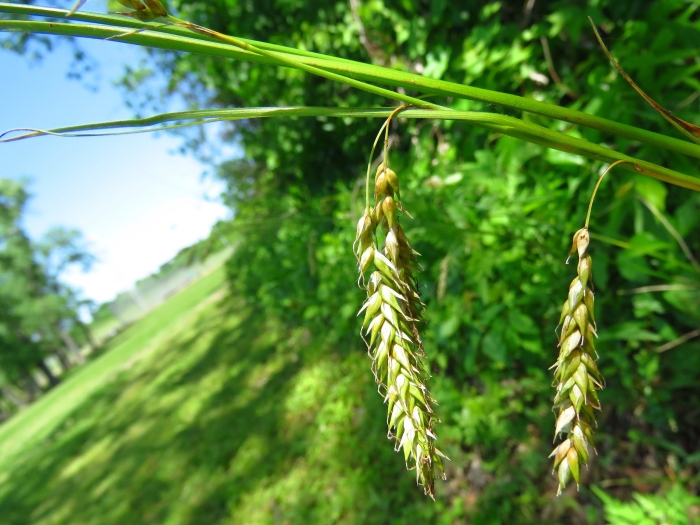Cherokee Sedge
(Carex cherokeensis)
Cherokee Sedge (Carex cherokeensis)
/
/

Annika Lindqvist
CC BY 4.0
Image By:
Annika Lindqvist
Recorded By:
Copyright:
CC BY 4.0
Copyright Notice:
Photo by: Annika Lindqvist | License Type: CC BY 4.0 | License URL: http://creativecommons.org/licenses/by/4.0/ | Rights Holder: Annika Lindqvist | Publisher: iNaturalist | Date Created: 2020-04-25T13:37:59-07:00 |



















































Estimated Native Range
Summary
Carex cherokeensis, commonly known as Cherokee Sedge, is an evergreen perennial grass native to moist meadows, open woodlands, and along stream banks in the Central and Southeastern United States. It typically grows to a height and width of 0.5-1 feet (0.2-0.3 meters), forming dense clumps of fine-textured, grass-like foliage. The plant produces inconspicuous greenish-brown flowers in late spring to early summer, which are not particularly showy but add to the plant’s naturalistic appeal.
Cherokee Sedge is valued for its adaptability and low maintenance requirements, making it a suitable choice for rain gardens, borders, and as a ground cover in naturalized areas. It is also utilized for erosion control due to its dense root system. In cultivation, it prefers partial shade to full sun and can tolerate a range of soil conditions, though it thrives in moist, well-drained soils. While generally pest and disease-free, it can suffer from root rot if planted in overly wet conditions. Cherokee Sedge is not known for aggressive roots or invasiveness, making it a reliable and environmentally friendly addition to gardens.CC BY-SA 4.0
Cherokee Sedge is valued for its adaptability and low maintenance requirements, making it a suitable choice for rain gardens, borders, and as a ground cover in naturalized areas. It is also utilized for erosion control due to its dense root system. In cultivation, it prefers partial shade to full sun and can tolerate a range of soil conditions, though it thrives in moist, well-drained soils. While generally pest and disease-free, it can suffer from root rot if planted in overly wet conditions. Cherokee Sedge is not known for aggressive roots or invasiveness, making it a reliable and environmentally friendly addition to gardens.CC BY-SA 4.0
Plant Description
- Plant Type: Grass
- Height: 0.5-1 feet
- Width: 0.5-1 feet
- Growth Rate: Slow
- Flower Color: N/A
- Flowering Season: Spring, Summer
- Leaf Retention: Evergreen
Growth Requirements
- Sun: Full Sun, Part Shade
- Water: Medium
- Drainage: Medium
Common Uses
Bird Garden, Border Plant, Butterfly Garden, Deer Resistant, Groundcover, Low Maintenance, Rabbit Resistant, Street Planting, Water Garden
Natural Habitat
native to moist meadows, open woodlands, and along stream banks in the Central and Southeastern United States
Other Names
Common Names:
Scientific Names: , Carex cherokeensis, Carex recurva, Carex baazasana, Carex brazatana, Carex christyana, Edritria recurva,
GBIF Accepted Name: Carex cherokeensis Schwein.